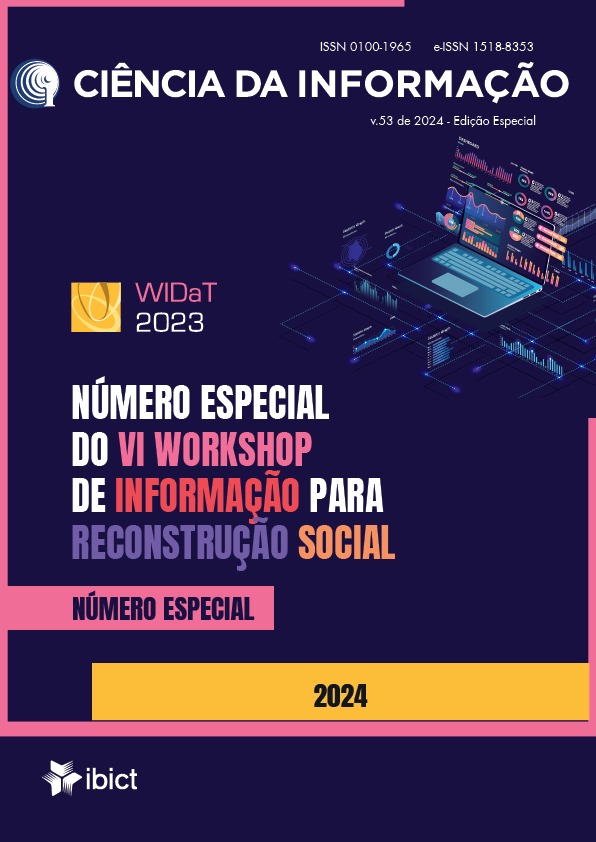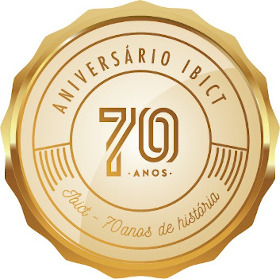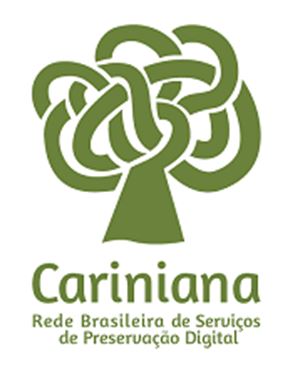La influencia de las autocitaciones en las decisiones editoriales a partir de la simulación de rankings de revistas
DOI:
https://doi.org/10.18225/ci.inf.v53i.6924Palabras clave:
Redes sociales académicas, Factor de impacto, Modelado basado en agentes, Integridad de la investigaciónResumen
La manipulación del Factor de Impacto de Revistas (JIF) mediante decisiones editoriales que aumentan las autocitaciones ha sido observada empíricamente en estudios recientes, generando discusiones sobre cómo evitar tales prácticas. Este estudio tiene como objetivo verificar si una política de eliminación de autocitaciones del cálculo del JIF es suficiente para eliminar los incentivos para la manipulación. Introducimos un modelo basado en agentes de la red social académica formada por las revistas para probar esta hipótesis. Modelamos las revistas como agentes racionales que buscan ganar posiciones en el ranking JIF. El modelo se implementó en NetLogo y calibró utilizando datos del SCIMago Journal Ranking. Los resultados de las simulaciones demuestran que el modelo es capaz de reproducir los patrones observados en las redes empíricas y que la eliminación de las autocitaciones puede reducir significativamente la adopción de estrategias de manipulación (por ejemplo, reducción del 90% al 30%). Este estudio contribuye a comprender el papel de las autocitaciones en el JIF y proporciona herramientas para desarrollar políticas que promuevan la integridad científica.
Descargas
Referencias
FALAGAS, M. E.; ALEXIOU, V. G. The top-ten in journal impact factor manipulation. Archivum Immunologiae et Therapiae Experimentalis, [s. l.], v. 56, n. 4, p. 223, 29 jul. 2008. Disponível em: https://doi.org/10.1007/s00005-008-0024-5. Acesso em: 25 abr. 2022.
FIRE, M.; GUESTRIN, C. Over-optimization of academic publishing metrics: observing Goodhart’s Law in action. GigaScience, [s. l.], v. 8, n. 6, Jun. 2019. DOI: 10.1093/gigascience/giz053.
GARFIELD, E. The History and Meaning of the Journal Impact Factor. JAMA, [s. l.], v. 295, n. 1, p. 90–93, 4 Jan. 2006. Disponível em: https://tinyurl.com/2p98mpwb. Acesso em: 24 mar. 2022.
GRIMM, V.; BERGER, U.; DEANGELIS, D. L.; POLHILL, J. G.; GISKE, J.; RAILSBACK, S. F. The ODD protocol: a review and first update. Ecological Modelling, [s. l.], v. 221, n. 23, p. 2760–2768, 24 Nov. 2010. DOI:10.1016/j.ecolmodel.2010.08.019.
GRIMM, V.; REVILLA, E.; BERGER, U.; JELTSCH, F.; MOOIJ, W. M.; RAILSBACK, S. F.; THULKE, H.-H.; WEINER, J.; WIEGAND, T.; DEANGELIS, D. L. Pattern-Oriented Modeling of Agent-Based Complex Systems: Lessons from Ecology. Science, [s. l.], v. 310, n. 5750, p. 987–991, 11 Nov. 2005. Disponível em: https://tinyurl.com/mwjxd4ty. Acesso em: 30 maio 2023.
HICKS, D.; WOUTERS, P.; WALTMAN, L.; RIJCKE, S.; RAFOLS, I. Bibliometrics: The Leiden Manifesto for research metrics. Nature, Londres, n. 520, Apr. 2015. p. 429–431.
KONG, X.; SHI, Y.; YU, S.; LIU, J.; XIA, F. Academic social networks: modeling, analysis, mining and applications. Journal of Network and Computer Applications, [s. l.], v. 132, p. 86–103, 15 Apr. 2019. Disponível em: https://tinyurl.com/mrvcac53. Acesso em: 26 out. 2021.
LEE, J.-S.; FILATOVA, T.; LIGMANN-ZIELINSKA, A.; HASSANI-MAHMOOEI, B.; STONEDAHL, F.; LORSCHEID, I.; VOINOV, A.; POLHILL, J. G.; SUN, Z.; PARKER, D. C. The Complexities of Agent-Based Modeling Output Analysis. Journal of Artificial Societies and Social Simulation, [s. l.], v. 18, n. 4, p. 4, Oct. 2015. DOI: 10.18564/jasss.2897.
LEYTON-BROWN, K.; SHOHAM, Y. Essentials of Game Theory: a concise, multidisciplinary introduction. [S. l.]: Springer International Publishing, 2008. Disponível em: https://link.springer.com/10.1007/978-3-031-01545-8. Acesso em: 15 fev. 2024.
MAGNUS, D. Overthrowing the Tyranny of the Journal Impact Factor. The American Journal of Bioethics, [s. l.], v. 13, n. 7, p. 1–2, 1 July. 2013. Disponível em: https://doi.org/10.1080/15265161.2013.807709. Acesso em: 20 mar. 2023.
MONASTERSKY, R. The Number That’s Devouring Science. Chronicle of Higher Education, [s. l.], v. 52, n. 8, p. 14, 2005. Disponível em: https://www3.nd.edu/~pkamat/citations/chronicle.pdf. Acesso em: 14 fev. 2024.
NIGEL, G.; KLAUS, T. G. Simulation For The Social Scientist. 2. ed. United Kingdom: Open University Press, 2005.
RAILSBACK, S. F.; GRIMM, V. Agent-Based and Individual-Based Modeling: a practical introduction. 2. ed. [S. l.]: Princeton: Princeton University Press, 2019.
SCIMAGO. SCImago Journal & Country Rank [Portal]. c2021. Disponível em: https://www.scimagojr.com/. Acesso em: 20 mar. 2022.
WALKER, R. L.; SYKES, L.; HEMMELGARN, B. R.; QUAN, H. Authors' opinions on publication in relation to annual performance assessment. BMC Med Education, [s. l.], v. 10, n. 21, 9 Mar. 2010. DOI: 10.1186/1472-6920-10-21.
WILENSKY, Uri. NetLogo. Northwestern University, Evanston, IL: center for connected learning and computer-based modeling, 1999. Disponível em: http://ccl.northwestern.edu/netlogo/. Acesso em: 14 fev. 2024.
WILHITE, A.; FONG, E. A.; WILHITE, S. The influence of editorial decisions and the academic network on self-citations and journal impact factors. Research Policy, [s. l.], v. 48, n. 6, p. 1513–1522, 1 July. 2019. Disponível em: https://tinyurl.com/2p9h4zp9. Acesso em: 24 mar. 2022.
Descargas
Publicado
Número
Sección
Licencia
Derechos de autor 2024 Luiz Gabriel Correia, Jesús Pascual Mena-Chalco

Esta obra está bajo una licencia internacional Creative Commons Atribución-CompartirIgual 4.0.
- La publicación se reserva el direcho de realizar, en los originales, cambios de orden normativa, ortográfica y gramatical, para mantener la norma culta del idioma, respetando el estilo de los autores;
- Las pruebas finales no seran enviadas a los autores;
- Los trabajos publicados pasan a ser propriedad de la revista Ciência da Informação, siendo su reimpresión total o parcial, sujeta a autorización expresa de la dirección del IBICT;
- Debe ser consignada la fuente de publicação original;
- Són de exclusiva responsabilidad de los autores las opiniones emitidas en sus artículos;
- Cada autor recibirá dos ejemplares de la revista, caso esté disponible en el formato impreso.




























